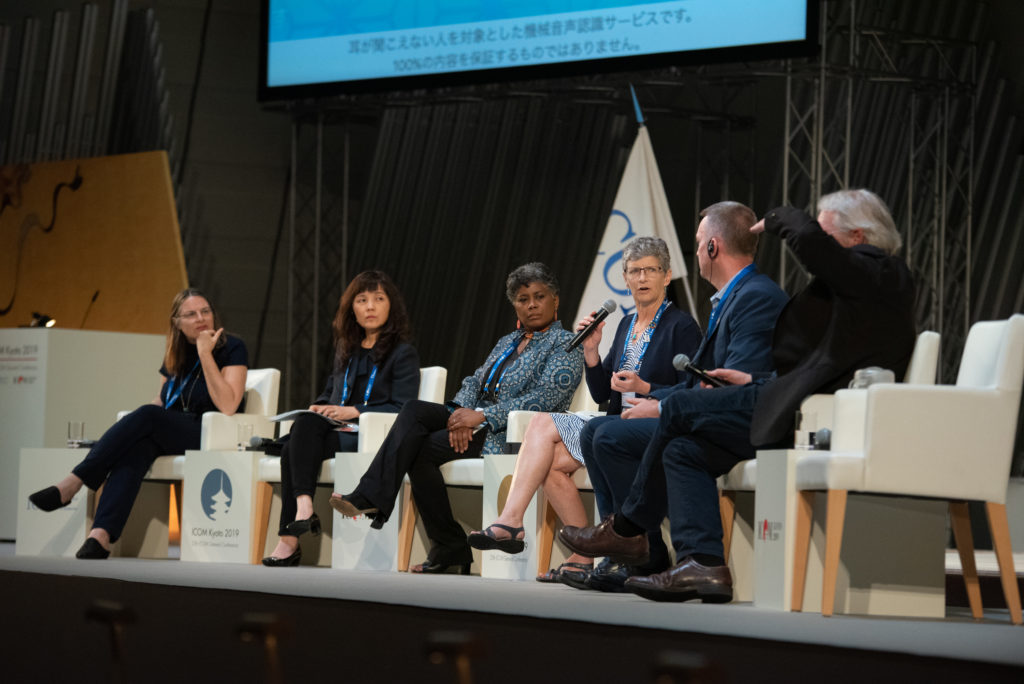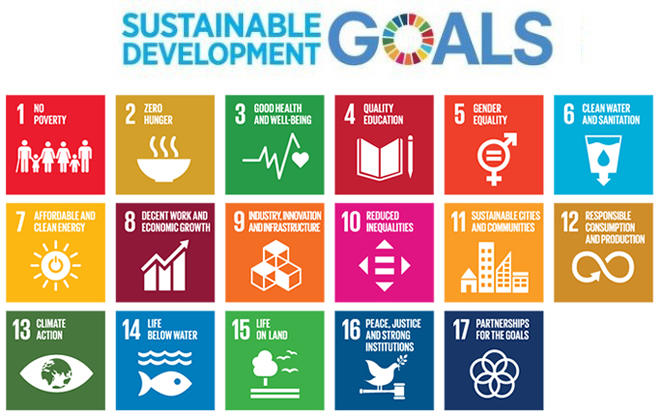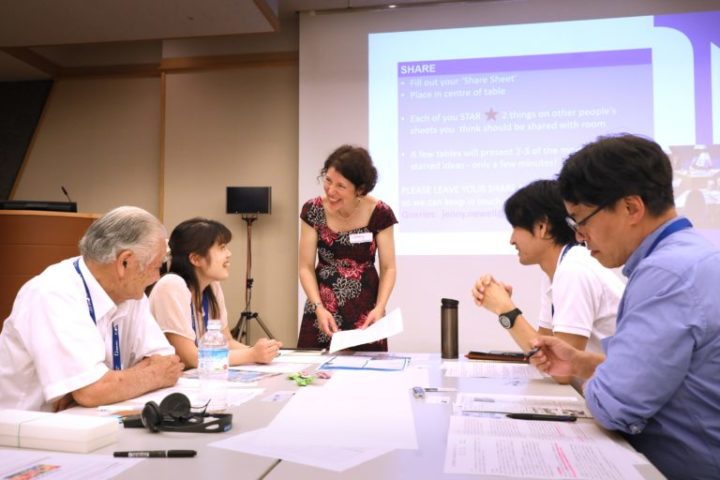
Henry McGhie
Consultant, Curating Tomorrow, UK (member of ICOM Sustainability Working Group)
Museums have no borders,
they have a network
January 21, 2020
Keywords: museum profession, sustainability, Sustainable Development Goals, local development and communities, future, climate change
At the ICOM triennial conference in Kyoto in September 2019, the membership overwhelmingly supported a resolution ‘On Sustainability and the Implementation of Agenda 2030, Transforming Our World’, drafted by the Sustainability Working Group and proposed by ICOM Norway and ICOM UK. This article aims to help people understand the United Nations’ Agenda 2030 and the 17 Sustainable Development Goals that support it, to help museum professionals achieve the ambitions of the resolution through their own work. The first point to make is that the Sustainable Development Goals (SDGs) are an amazing opportunity for museums, museum workers and museum networks, and if they seize this opportunity, they will benefit greatly from playing their part in this ambitious agenda.

At the turn of the millennium, the Millennium Development Goals were set up as a programme to reduce extreme poverty and improve health and education in the Global South. The programme ran from 2000-2015 and made some progress, but not enough. When the programme was being reviewed, there was a broad recognition that a new approach was needed: one that recognised the interconnectedness of challenges, and the global connections between drivers and consequences of challenges. Dealing with challenges one by one had proved unsustainable, with the result of moving problems from one place or situation to another. The successor programme was agreed by the 193 Members of the United Nations and launched in late 2015 as Agenda 2030, and the vision outlined in the publication Transforming Our World: The 2030 Agenda for Sustainable Development is amazing and I thoroughly recommend you read it. This vision is to be achieved through the pursuit of 17 Sustainable Development Goals, made up of 169 targets. The goals and targets were developed by a large consultation exercise with many sectors, so the goals and targets are not just the ‘UN Sustainable Development Goals’, they are everyone’s.
The SDGs can be thought of as our shared plan for the benefit of people, planet and prosperity (the three traditional dimensions of sustainability: social, environmental and economic, respectively), supported by and in pursuit of peace, and achieved through partnership. People, Planet, Prosperity, Peace and Partnership make up the magic, and easy to memorise, ‘5 Ps’.
The SDGs have a lot of traction:
This means there are lots of resources available on the SDGs and their implementation, which museums can draw on: we don’t need to reinvent the wheel, or start from scratch. The most important feature of the SDGs is that they apply everywhere and to all sectors; they are a common direction and shared language that seeks to address social and environmental challenges in all countries.
So, what have the SDGs got to do with museums?
Everything. Museums are closely linked to some of the targets of the SDGs, notably around protecting and safeguarding cultural and natural heritage, supporting education for sustainable development, and supporting research and cultural participation. However, they have many more connections across the 17 goals, and they consume lots of energy and produce lots of waste too. Agenda 2030 and the SDGs need museums to play their part for the agenda to be successful. On the other hand, museums need the SDGs: they help them connect with other sectors, put their amazing resources to good use, and offer them an ambitious global agenda that helps them demonstrate their relevance and impact. The SDGs and museums are a great match: they help us think about the challenges and opportunities in the various contexts of our work – locally, nationally and globally – and they help us connect the problems and opportunities in different sectors together to create more public value. They help us focus our activity to help address poverty and inequality, marginalisation of communities and groups, climate change, use of energy and waste production, conservation of species and habitats, all through a collaborative, far-sighted agenda.

The SDGs are not perfect, but they are by far the best available blueprint for focusing heads, hearts and hands to creating a better future, together. The decade 2020-2030 has been set out as a decade of action: global action, local action and people’s action. Museums are very well placed to support all three of these aspects, working to address inequalities everywhere, empowering everyone, and addressing climate change and conservation of nature. Every museum and each museum worker has something to offer to this agenda and we have to play our part so that, when 2030 comes, we will be able to say that we did what we could. There is nothing to lose and everything to gain by contributing to this programme to create a world that works for everyone, everywhere, forever.
References and Resources:
ICOM. 2019. Resolution No.1 ‘On sustainability and the adoption of Agenda 2030, Transforming our World’. Paris: ICOM. Available at: https://icom.museum/wp-content/uploads/2019/09/Resolutions_2019_EN.pdf
McGhie, H. 2019. NEMO Webinar: ‘Using the Sustainable Development Goals in Museums’. YouTube. Available at: https://www.youtube.com/watch?v=kXUGPGkyUUY
UNESCO. 2018. Culture for the 2030 Agenda. Paris: UNESCO. Available at: http://www.unesco.org/culture/flipbook/culture-2030/en/Brochure-UNESCO-Culture-SDGs-EN2.pdf
United Nations. 2015. Transforming our World: The 2030 Agenda for Sustainable Development. New York: United Nations. Available at: https://sustainabledevelopment.un.org/content/documents/21252030%20Agenda%20for%20Sustainable%20Development%20web.pdf
For more information on how to incorporate the SDGs into your work, see Museums and the Sustainable Development Goals: A how-to guide for museums, galleries, the cultural sector and their partners. Available at: bit.ly/2ZdSFUR
For background information on the SDGs, Agenda 2030, and resources to support them, see https://www.un.org/sustainabledevelopment/
Resources on the SDGs for educators, from UNESCO: https://en.unesco.org/themes/education/sdgs/material
Learning objectives for each of the SDGs, from UNESCO:
https://unesdoc.unesco.org/ark:/48223/pf0000247444
Opinions expressed in the article do not commit ICOM in any way and are the responsibility of its author.
To participate in our newest ICOM Voices call for contributions, click here.
